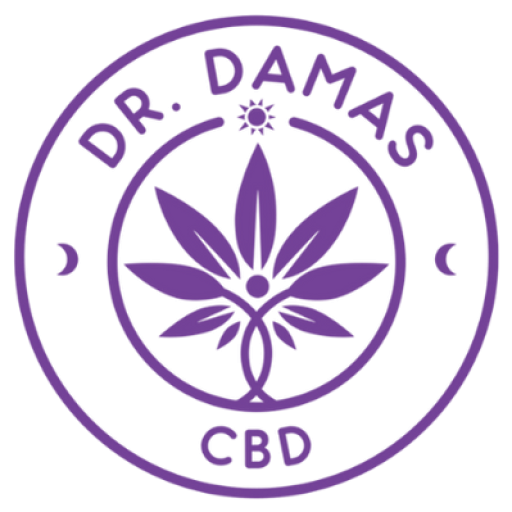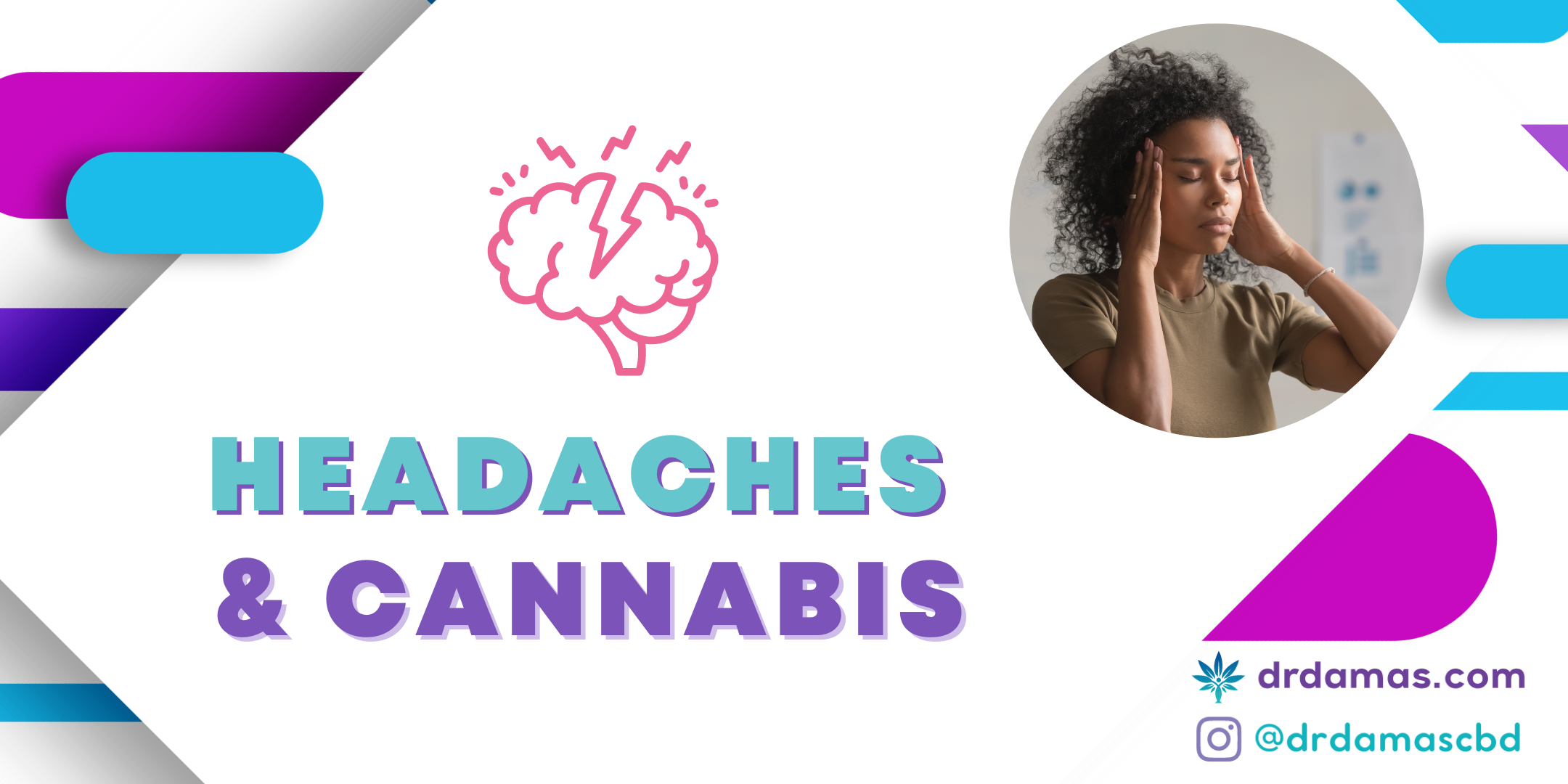Headaches & the Role of Cannabis + Holistic Options
What Are Headaches?
I recently did a segment on the Lurie Daniel Favors show about migraines and received an incredible response from the audience. Although the conversation was centered on migraines, the debilitating nature of headaches is universal regardless of type and that struck a chord with the audience. Headaches are one of the most common disorders globally, affecting millions of people. They can range from occasional discomfort to debilitating pain. The National Institutes of Health (NIH) estimates that 50% of adults will experience a headache within any given year. Understanding the type of headache you have can help in choosing the best treatment options.
Common Headaches
Headaches can be classified as primary (not caused by another condition) or secondary (resulting from another medical condition, like sinus infections).
Primary Headaches
Tension Headaches: The most common type, often caused by stress, poor posture, or dehydration.
Migraines: Neurological headaches often accompanied by nausea, light sensitivity, and auras.
Cluster Headaches: Extremely painful headaches occurring in cycles, affecting fewer than 1% of the population.
Secondary Headaches
Sinus Headaches: Caused by inflammation of the sinus cavities due to allergies or infections. Often mistaken for migraines but can be differentiated by nasal congestion.
Pearls:
Tension headaches are the most common, affecting over 75% of adults.
Cluster headaches, though rare, are considered one of the most painful types of headaches.
Types of Headaches
1. Tension Headaches
Tension headaches affect up to 75% of adults and are usually caused by stress or muscle tension. They are characterized by a dull, aching sensation around the head and pressure in the forehead, temples, and neck. These headaches can last from 30 minutes to several days.
Pearls:
Tension headaches are commonly triggered by stress, making relaxation techniques essential.
Proper posture can play a crucial role in preventing tension headaches.
2. Migraines
Migraine is a neurological condition affecting around 12% of the population. Women are disproportionately affected due to hormonal changes. Migraines can last for hours to days and are often accompanied by nausea, sensitivity to light and sound, and auras.
Pearls:
Migraines are three times more common in women than in men.
Visual disturbances like auras can serve as warning signs before a migraine begins.
3. Cluster Headaches
Cluster headaches are intense headaches that occur in cyclical patterns and are often described as burning or piercing pain around one eye. Though less common, they are extremely painful and can strike multiple times in a day during a cluster period.
Pearls:
Cluster headaches are sometimes called “suicide headaches” due to their extreme intensity.
They are more common in men than women, and alcohol can trigger attacks.
4. Sinus Headaches
Sinus headaches are secondary headaches caused by inflammation of the sinus cavities due to infections or allergies. They are characterized by pressure around the nose, forehead, and eyes, and can be accompanied by nasal congestion.
Pearls:
Sinus headaches are often mistaken for migraines but can be identified by symptoms like facial pressure.
Treatment of sinus headaches typically involves decongestants or antibiotics for bacterial infections.
Traditional Treatments: Pros and Cons
Over-the-counter pain relievers like ibuprofen and acetaminophen are often used for mild headaches, while prescription medications like triptans and beta-blockers are reserved for more severe cases. These medications can be effective but may come with side effects such as nausea and rebound headaches if overused.
Pearls:
Overuse of pain relievers can lead to medication-overuse headaches.
Triptans are effective for migraines but may have cardiovascular risks.
Holistic Treatments: Pros and Cons
Holistic options like acupuncture, chiropractic care, and meditation are gaining traction as alternatives with fewer side effects. Acupuncture has been shown to reduce the frequency of migraines, and chiropractic adjustments may relieve tension headaches.
Pearls:
Acupuncture can reduce the frequency of migraines by up to 50% in some patients.
Chiropractic care, combined with exercise, is effective in treating tension headaches.
Cannabis and CBD: Benefits and Routes of Administration
Cannabis and CBD have emerged as alternative treatments for chronic headaches of all types. CBD interacts with the body’s endocannabinoid system to reduce headache pain and inflammation.
Routes of Administration:
Inhalation (Smoking or Vaping): Inhalation provides rapid relief because cannabinoids enter the bloodstream quickly. This can be beneficial for individuals who need immediate headache relief, although it may not be suitable for those who are sensitive to smoke (like me) or have lung conditions.
Sublingual (Under the Tongue): CBD tinctures and oils can be taken sublingually, allowing for a more controlled and steady release of cannabinoids. This method offers a good option for those who want to avoid smoking/vaping but still desire relatively fast headache relief.
Edibles: Cannabis edibles take longer to take effect, usually between 30 minutes to two hours, but the effects are longer-lasting. Edibles are considered to be useful for preventing migraines or long term relief as opposed to providing immediate headache relief.
Topicals: Some people use topical CBD creams or balms applied to the temples or neck to reduce localized pain and inflammation, though their effectiveness for headaches specifically is still under study.
Pearls:
Sublingual CBD offers a fast-acting, non-psychoactive way to manage headache symptoms.
Topical CBD products can be effective for tension headaches, providing targeted relief without affecting the whole body.
Wrapping It All Up
I always enjoy learning more about how we can help people with CBD and cannabis, especially when they've tried other options without success. I’ve been able to manage my headaches with lifestyle changes and CBD. My headaches were due to head trauma from football, which is a reminder that headaches come in many forms- each with its own causes and treatments. While traditional medications are effective for many, holistic methods and cannabis/CBD-based treatments are growing in popularity due to fewer side effects.
Understanding your specific type of headache can lead to more targeted and effective treatment strategies. Make sure you only buy the best products and make sure you discuss things with a healthcare provider and reach out to us if you have any questions 🙂
Pearls:
Tension headaches affect over 75% of adults worldwide, making them the most common type.
Cannabis and CBD offer alternative treatments for migraines and chronic headaches, with promising results.















